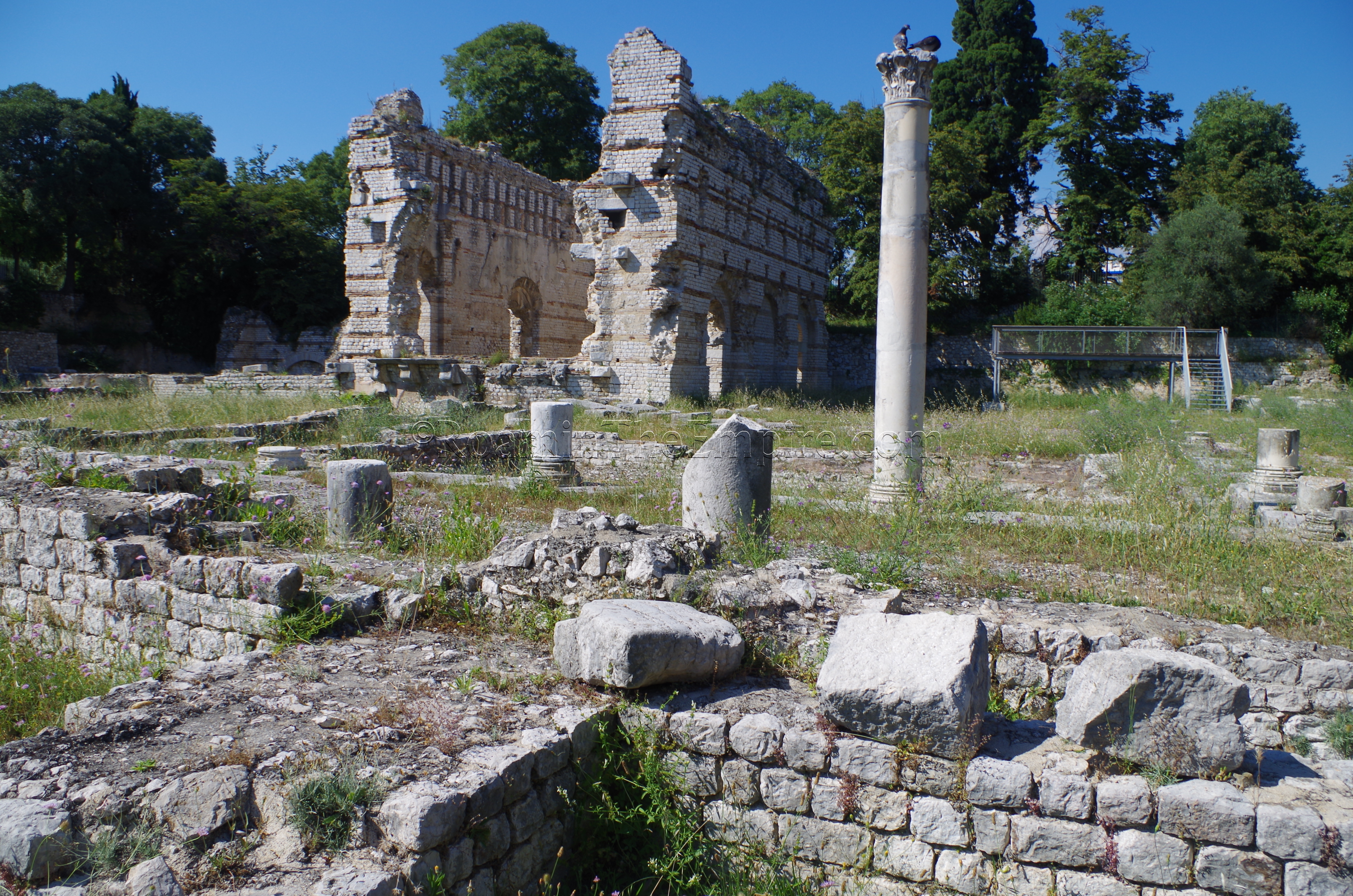
History
Perched on a hill above the bustling city of Nice, in a neighborhood derived from the ancient city’s name (Cimiez), are the remains of the Roman town of Cemenelum. Preceding Cemenelum were both a Gallic and Greek settlement in the immediate area. The Greek settlement, Nikaia, was founded by colonists from Massalia in the 4th century BCE. The name, from which the modern city’s name comes, was derived from Nike, and was used in reference to a victory over the local Celto-Ligurian Vediantii by the Massiliotes and the subsequent establishment of the colony. There are several proposed locations for the Greek settlement, but so far there has been no archaeological evidence to pin down an exact location. The Vediantii seem to have maintained an oppidum in the area after the arrival of the Greeks, likely in the area of what would become Cemenelum, which seems to be a name of Ligurian origin.
In 154 BCE, attacks by Ligurian tribes on Nikaia and nearby Antipolis (modern Antibes) necessitated Massilia turning to Rome for assistance. The Vediantii do not seem to be among the tribes involved in the attacks on the Greeks. Subsequent campaigns against the Celto-Ligurians in the area do not seem to have involved the Vediantii either, nor are they listed among the tribes named on the Tropaeum Alpium as having been pacified in campaigns in the late 1st century BCE by Augustus. Cemenelum seems to have been founded around this time, likely very near the Vediantii settlement, and was named as the capital of the Alpes Maritimae province that was created by Augustus in 14 BCE.
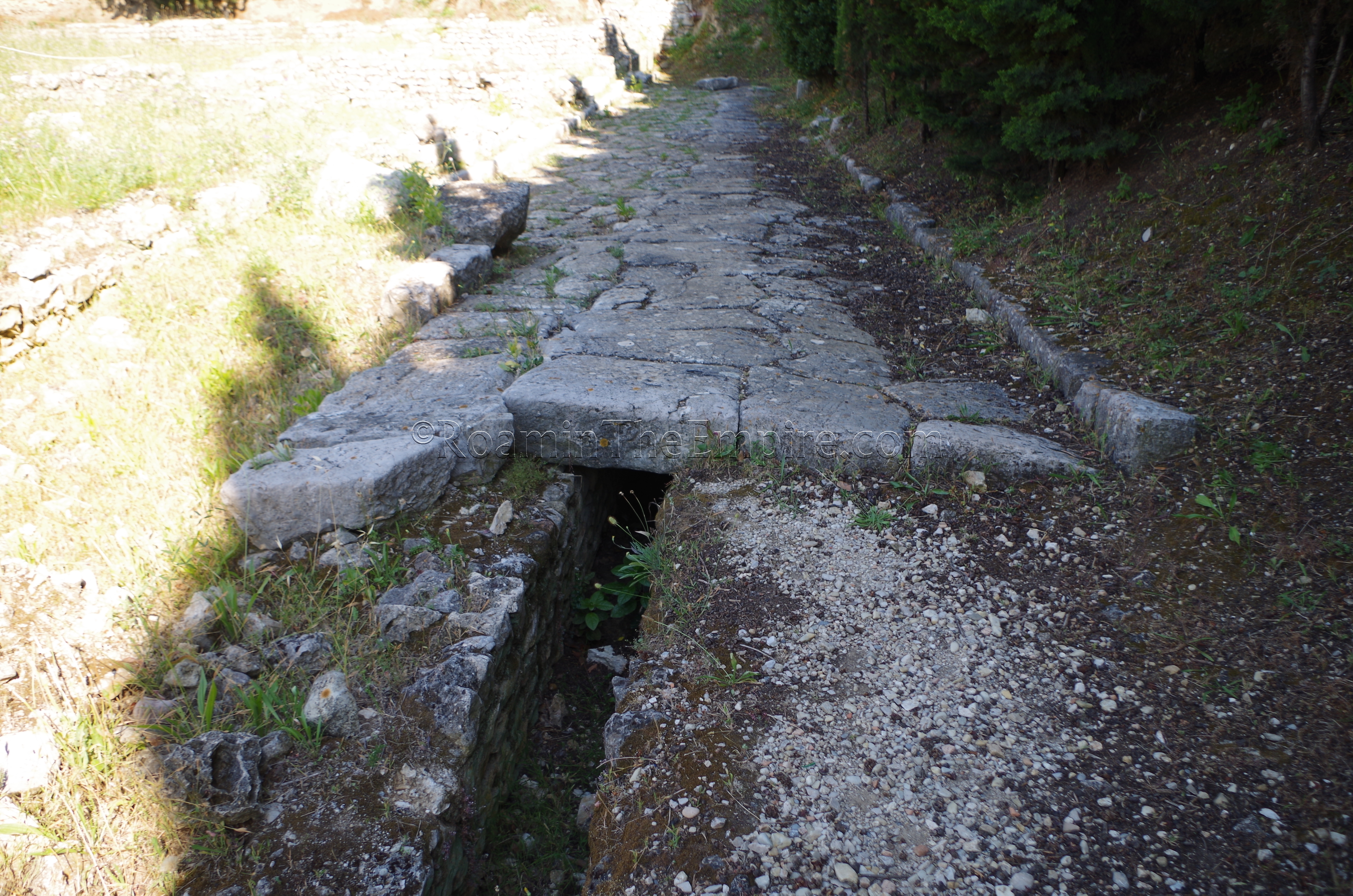
Cemenelum doesn’t feature much after its establishment in late 1st century BCE. It seems to have flourished somewhat, though, in the late 1st and early 2nd century CE, when several large public bathing complexes were constructed and the amphitheater was refurbished. The settlement continued to serve as the administrative capital of the region until the reforms of Diocletian. In the 4th century CE, Cemenelum suffered during the barbarian invasions and entered into a state of decline with most of the large public works no longer serving their original purpose. In the 5th century, the area was largely abandoned in favor of the town that would become Nice, down near the sea and the cathedral that had been constructed there.
Getting There: Nice is a pretty major city, and as such it is well connected by rail from other cities in France. There is also the Aéroport Nice Côte d’Azur, an international airport with flights to and from destinations around Europe. From the Gare de Nice Ville, the main train station, it’s a short walk and bus ride to get to the remains of Cemenelum in Cimiez. A 10 minute walk down the road, east of the train station, is the Roland Garros bus stop. Line 15 toward Rimiez St George can then be taken 7 stops to the Arènes/Musée Matisse stop, which lets off right in front of the amphitheater. The return bus picks up just across the street with line 15 toward Deloye/Dubouchage. Tickets are 1.50 Euro each way and buses typically run every 10-20 minutes during daytime hours.
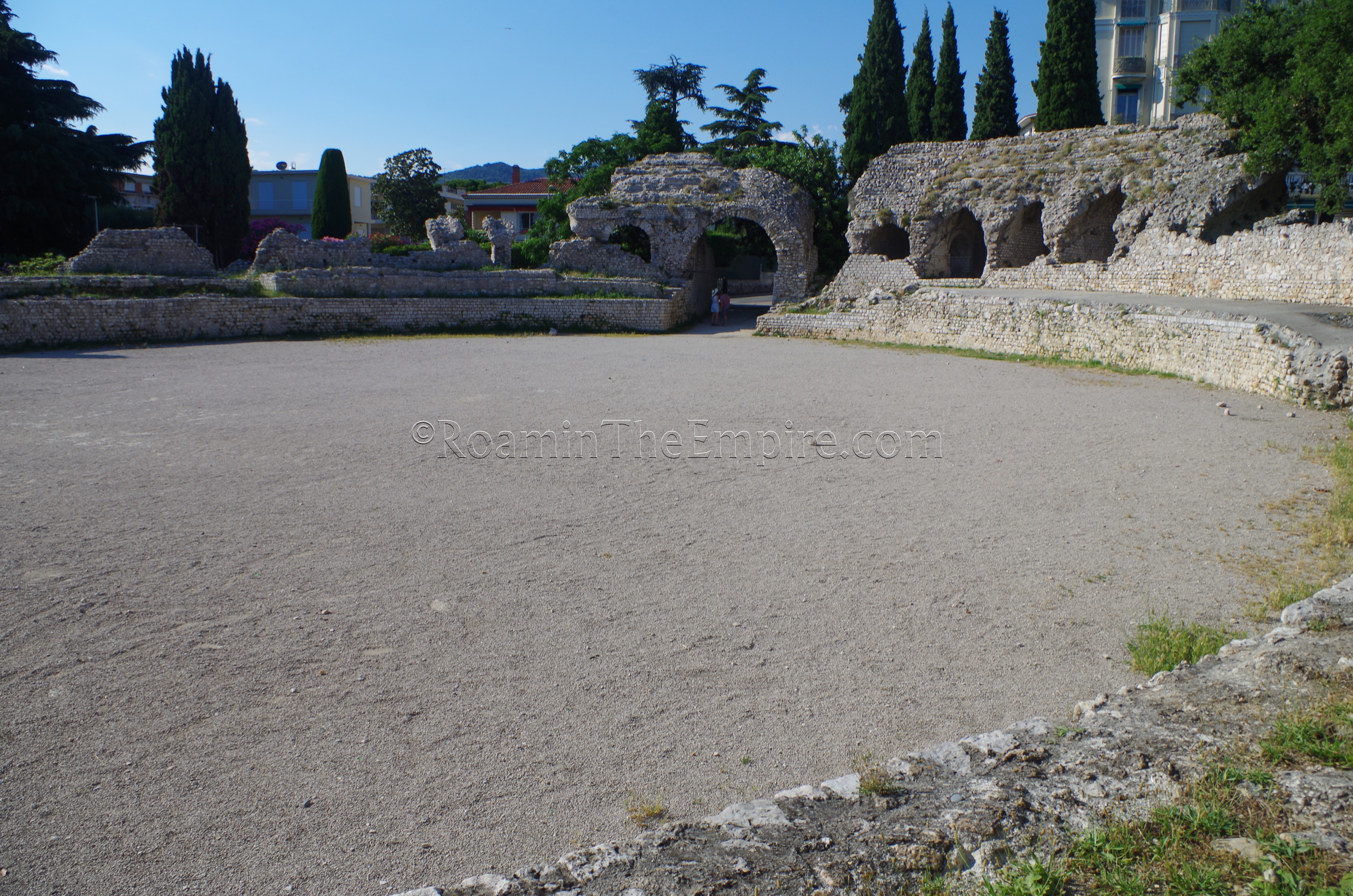
Amphitheater
There are essentially two separate things to visit in ancient Cemenelum; the amphitheater and the museum/baths. The amphitheater is not a ticketed site, there is free access. It is, however, gated, and there are hours at which the interior is not accessible (though the entirety of the western exterior wall of the amphitheater functions as the wall that prevents access to the gardens). As part of the Jardin des Arènes de Cimiez, the amphitheater is accessible every day from 8:30 to 18:00 October through April, and between 8:30 and 20:00 the rest of the year.
The amphitheater of Cemenelum seems to have been constructed in two phases. The first phase dates to the reign of Augustus and includes just the interior ring of stone supports. This form of the amphitheater likely included wooden seating and only had a capacity of about 500-600 spectators. Later, during the Severan dynasty, the outer stones supports and stone seating were added. This expanded the capacity tenfold to about 5,000. The amphitheater also, notably, has no subterranean rooms.
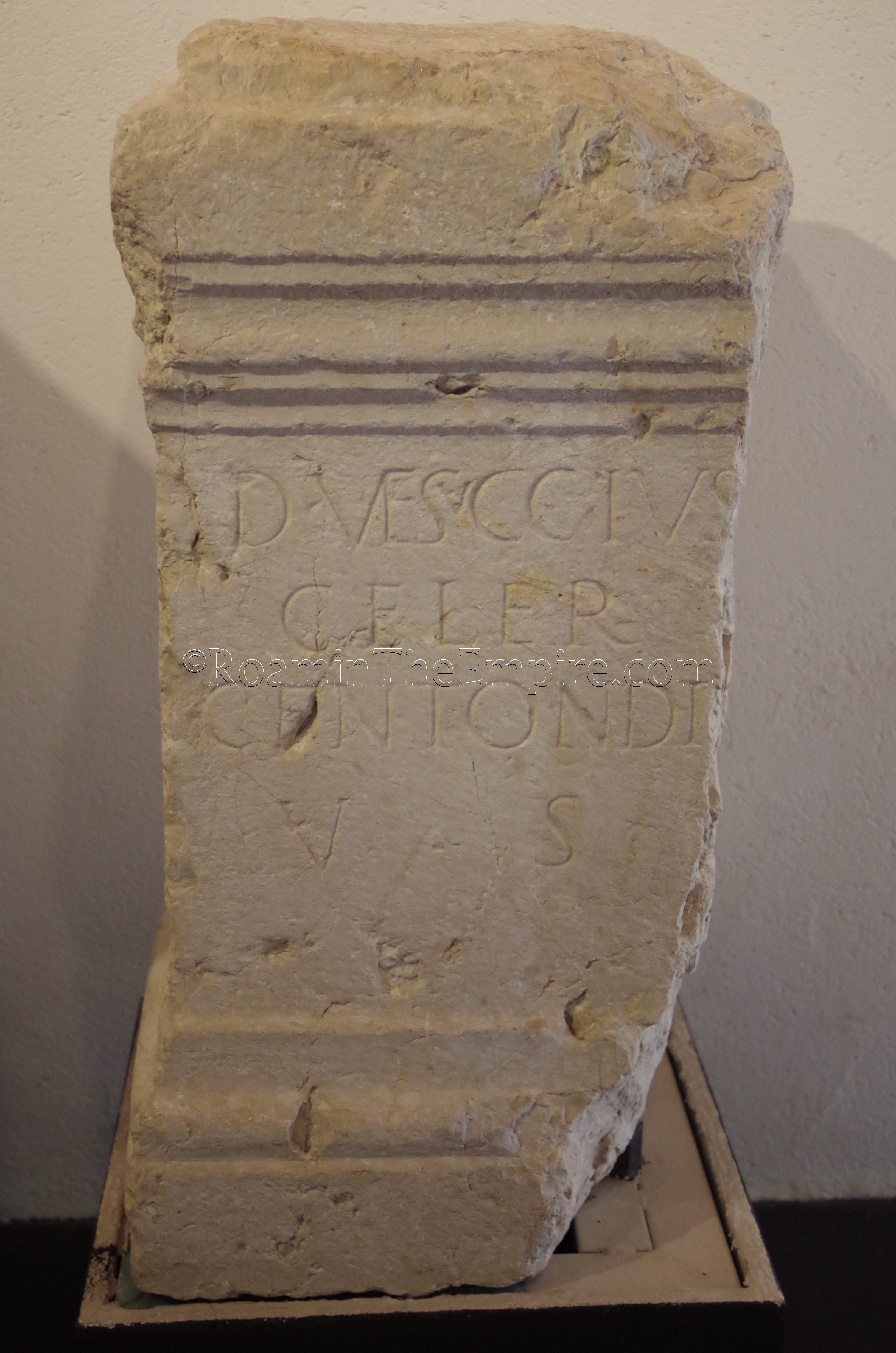
Musée et Site Archeologique Nice Cemenelum
Just opposite the amphitheater is the Musée et Site Archeologique Nice Cemenelum at 160 Avenue des Arènes de Cimiez. The museum and archaeological site are open 10:00 to 17:00 every day except Tuesday. During the summer (May through October) the hours are extended to 10:00 to 17:00, again with closings on Tuesdays. Admission can only be purchased as part of a city-wide museum pass; the Pass Musées de Nice. This pass costs 10 Euros for a 24 hour pass or 20 Euros for a 7 day pass and allows free access to 14 different museums and galleries over the period purchased. Individual admission is not allowed; you have to buy the pass regardless of whether or not you intend to visit any of the other museums. I debated with the museum staff about this for some time, as I was visiting on a Monday afternoon and most of the museums close on Tuesday (though I didn’t intend on visiting any other museums that day anyway), but it was met with little sympathy.
The museum itself was quite small and the collection was primarily smaller finds. A significant portion of the collection was small bronze objects, including some nice statuette and figural pieces. The other main part of the collection is made up of altars and smaller dedications. There’s a few other odds and ends; one large piece of statuary and some wall painting fragments among them. A model of the nearby Tropeum Alpium is also present and prominently displayed. None of the information, which is fairly sparse, in the museum is in English. Overall, it took me about 20 minutes to go through the collection.
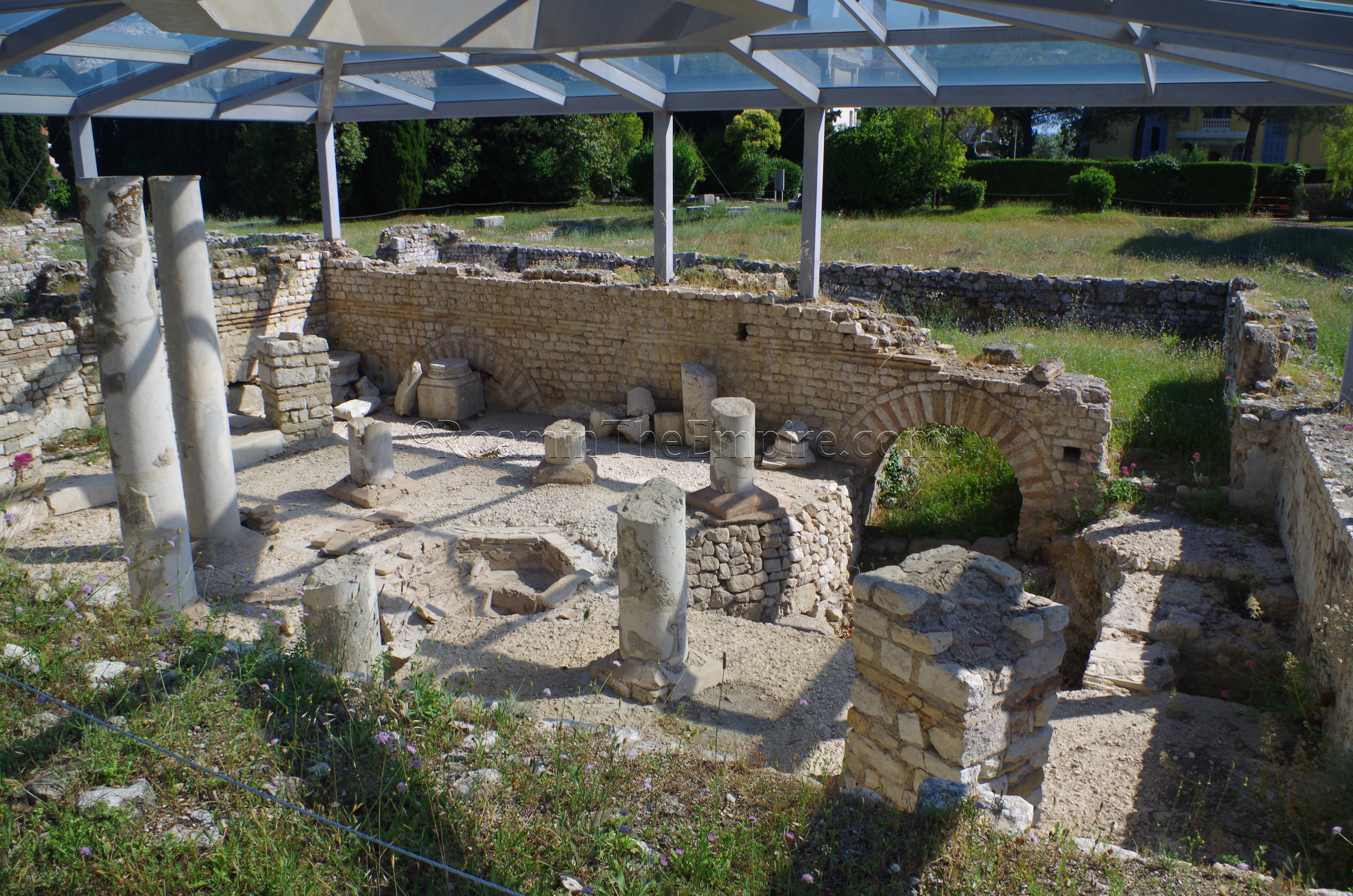
Behind the museum and with part of the same admission is the archaeological area of Cemenelum, which is essentially made up of three bath complexes. The bath complexes are named according to their geographic positioning; the Thermes de l’Ouest (western baths, closest to the museum), Thermes de l’Est (eastern baths) and Thermes du Nord (northern baths). Perhaps the most unfortunate thing at this site is that the visitor path prevents one from getting very close to the remains. In the case of the western baths, they are rather small and the path cuts along the western and northern edges of the bathing complex, allowing the visitor to see most of the form. For the other two bathing complexes, though, they are much larger and must be viewed from a distance. It looks as though, at one time, there was less restricted access.
The closest baths to the museum, the western baths, seem to have been the last of the three to have been constructed, perhaps in the early 2nd century CE. Finds in the drains have led to the theory that it was a women’s bathing complex. In the 5th century CE, the baths were converted into a church. The walls between the caldaria and tepidarium were demolished in order to create the nave, while the frigidarium became the choir. The praefurnia were converted into the area of the baptistery, which can be seen in the center of the canopied section. The arches leading from the praefurnia to the heated rooms survived the conversion and are present.
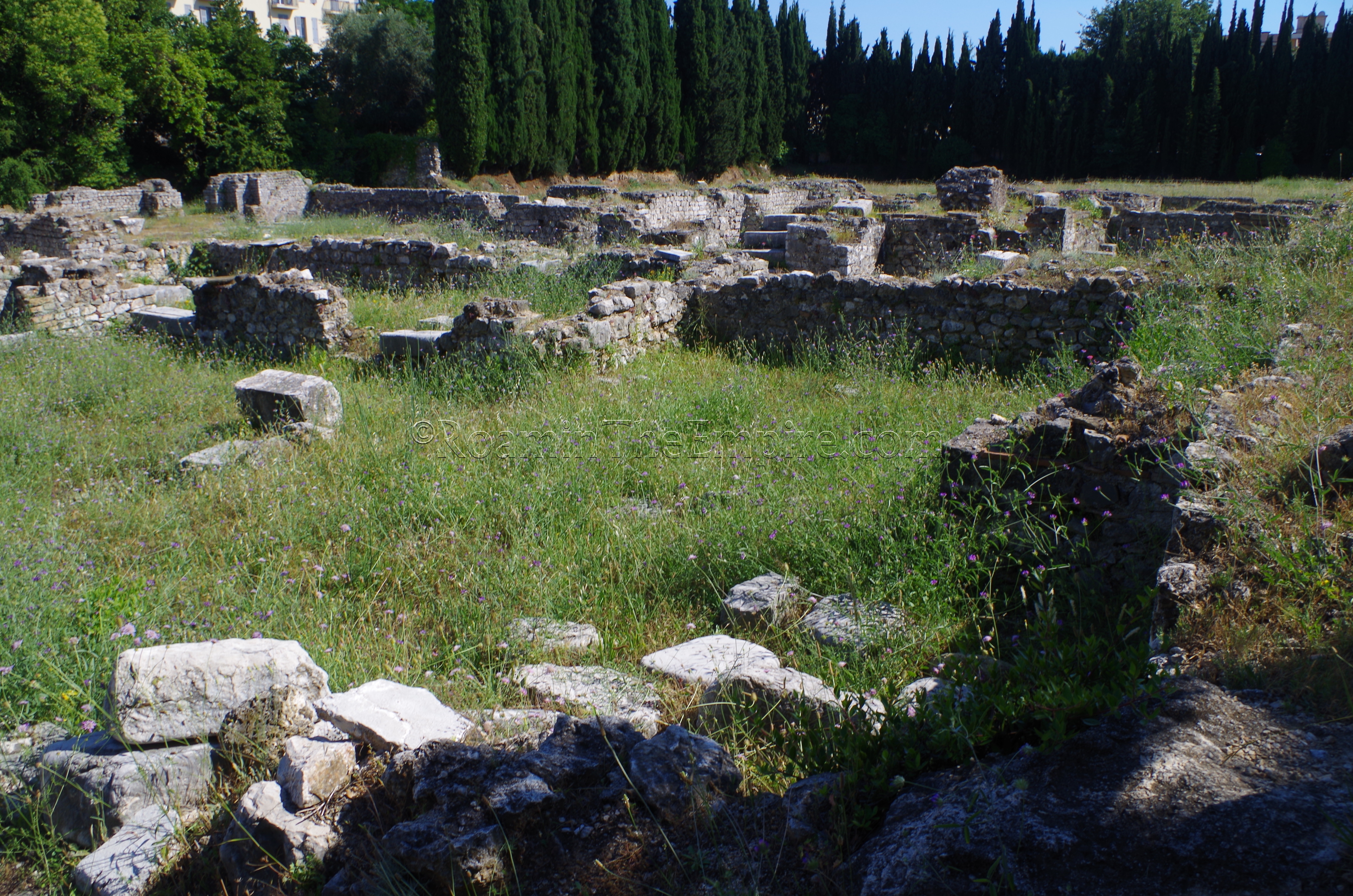
The eastern baths are much larger, with the main bathing rooms being further away from the visitor accessible areas. The area was quite overgrown as well, which further prevents most of the interesting features from being observed. The natatio, which was right next to the path and essentially the only discernible feature of the eastern baths visible, was mostly obscured. South of the eastern baths is an area known as the southern quarter, which seems to have housed a number of public buildings, including perhaps a schola. This was, like most of the site, inaccessible and largely overgrown. A decumanus running along the south side of the southern quarter is well preserved, though, and part of the sewer running under the road is also visible.
Like the eastern baths, the northern baths are completely inaccessible, and only visible from the south. Some pretty significant remains of the walls of the frigidarium, in particular, as well as the heated rooms are still standing. A sturdy, buttressed wall running between the northern baths and the visitors path (which is also a decumanus, though the remains were mostly covered) likely carried an aqueduct. The one feature of the northern baths that is really discernable from the accessible path, are the latrines in the southeast part of the complex. Flooring and a few remaining seats are visible. The natatio is also barely visible, but a few columns from the portico surrounding it are standing.
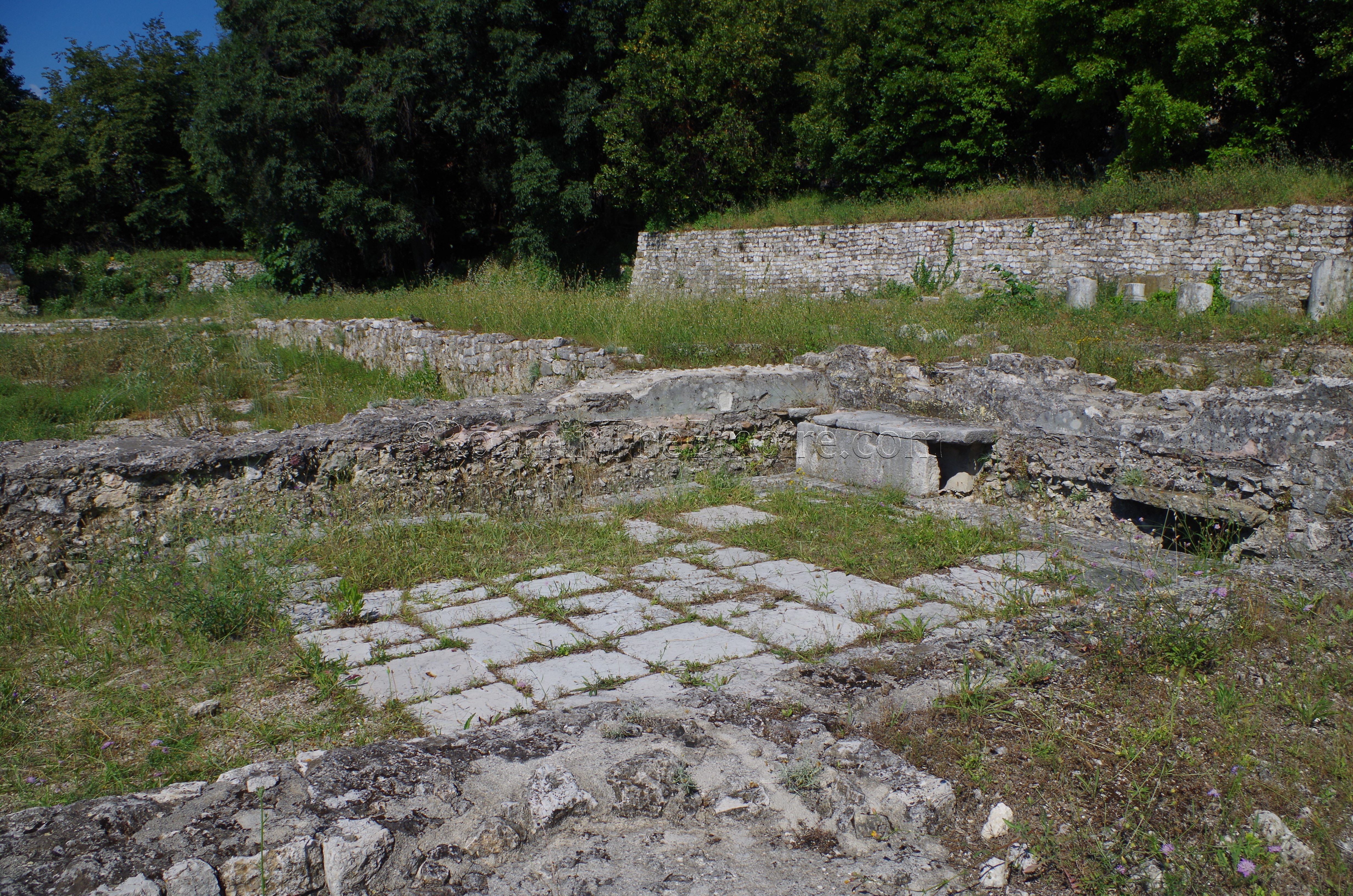
There isn’t really any informational signage for the archaeological area, though there is a map on display in the museum. It took me about 15-20 minutes to walk around the site. The lack of access makes it a pretty linear visit without much time to spend at any given location. All told, the museum and site were less than an hour to see combined. Given that the price was rather steep, it was a bit disappointing. One definitely needs to visit another museum or two to get value out of the pass (the Matisse museum next door is nice). The staff at the archaeological museum was rather curt as well, not allowing me to go back out to the archaeological site after walking through the museum (and being able to put the remains in context with the map, which was not available before going through the museum, which I was told by the staff I should do second).
Most Recent Visit: June 2019.
Sources:
Bromwich, James. The Roman Remains of Southern France: A Guidebook. London: Routledge, 1996.
Stillwell, Richard, William L. MacDonald, and Marian Holland. McAllister. The Princeton Encyclopedia of Classical Sites. Princeton, NJ: Princeton U Press, 1976.


